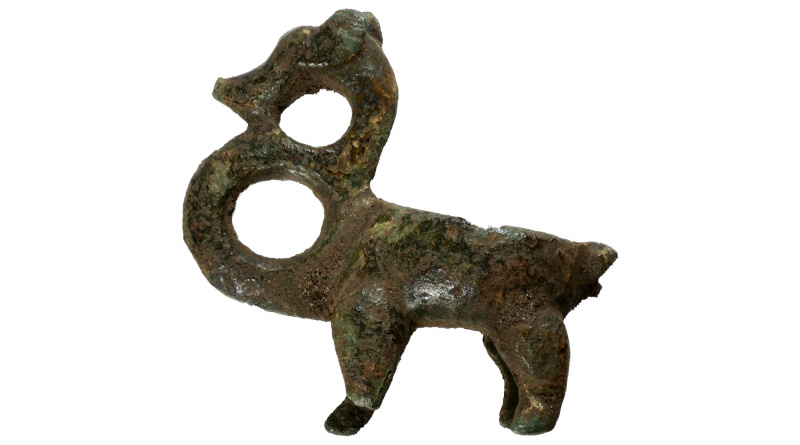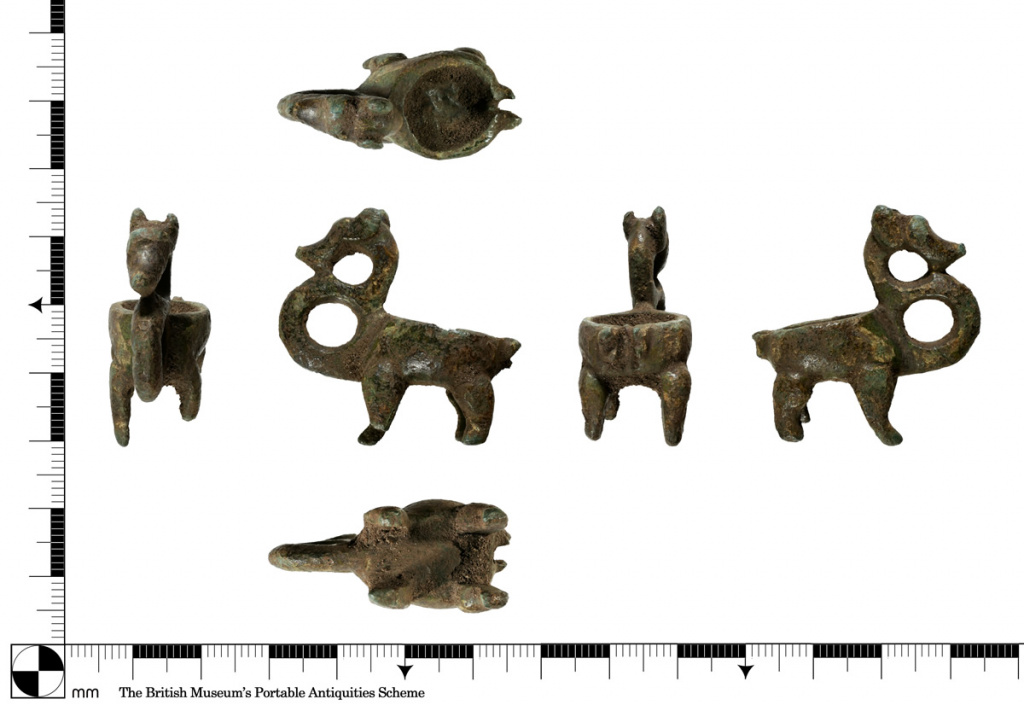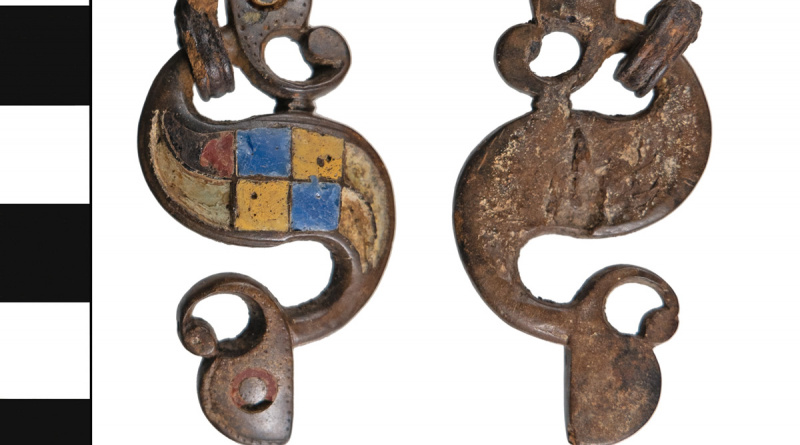PAS Finds (w/e 9/6/23) – Ketos
PAS Finds (w/e 9/6/23) – Ketos
My selection of the detecting finds recorded at the PAS during the week ended 9 June 2023.
Featured Find
Roman figurine of a Ketos
A copper alloy figurine of a quadruped with a long S-shaped neck. On the rear end is a remains of a hinge lug suggesting it served as a lidded container. It is a Find of Note of County Importance.
On the PAS record, Martin Henig comments that it is similar to the depiction of ketos (sea monsters) as seen on mosaics such as the Lydney Cella.
Lydney Park temple
Lydney Park was bought in 1719 by Benjamin Barthurst and has remained in the family since then. He had 36 children. In the early 19th century a Charles Bragg, later to be known as Charles Barthurst, inherited Lydney Park through his marriage to Benjamin’s granddaughter, Anne. Charles composed an “elaborate dissertation” on the Roman villa and temple unearthed at Lydney.1
Charles son, Rev. William Hiley Barthurst collated these memoirs into a book2 which was published in 1879, 2 years after his death. This book provides the only visual record of some of the mosaics at the Roman temple.
Templvm Marti Nodentis
The Templvm Marti Nodentis or Temple of Mars and Nodens, with its guest house and baths, at Lydney Park was built in the late 3rd early 4th century within a fort on a steep bluff overlooking the Severn Estuary.

Rev. William Hiley Barthurst’s book
The design was a variation on the usual Romano-Celtic style temple. The design of the cella, or sanctuary and the nature of the artefacts found there suggest that this was a place of healing.
The only other site in England dedicated to Nodens is at Cockersand Moss in Lancaster.
J.R.R. Tolkein
The author, J.R.R. Tolkein was invited to interpret the Latin inscription of Nodentis at the temple. He linked the name to the Old Irish king Nuada Airgetlám and the Welsh Nudd, Lludd who is closely associated with Glastonbury Tor. These names mean “hunter” or “catcher”.
Tolkein’s work at Lydney is considered to be pivotal influence on his invention of Middle Earth from his Lord of the Rings.
Mosaic with ketos

This mosaic from the cella floor show fish, dolphins and sea monsters with a similar form to the found object. Some suggest that this also makes Nodens a god of the sea, fishermen, sailors etc.
Nodens
The temple site is near the start of the Severn bore and some feel this is significant as a god connected with water. Some other sources indicate a that Romano-Britons equated Nodens with Mars and later with Neptune.
Therefore, Nodens may have meant different things to different people. However, he was certainly a powerful god and as such would have been considered to have healing properties. If the find is an object from this temple, it could well have been a container for medicine produced there.




